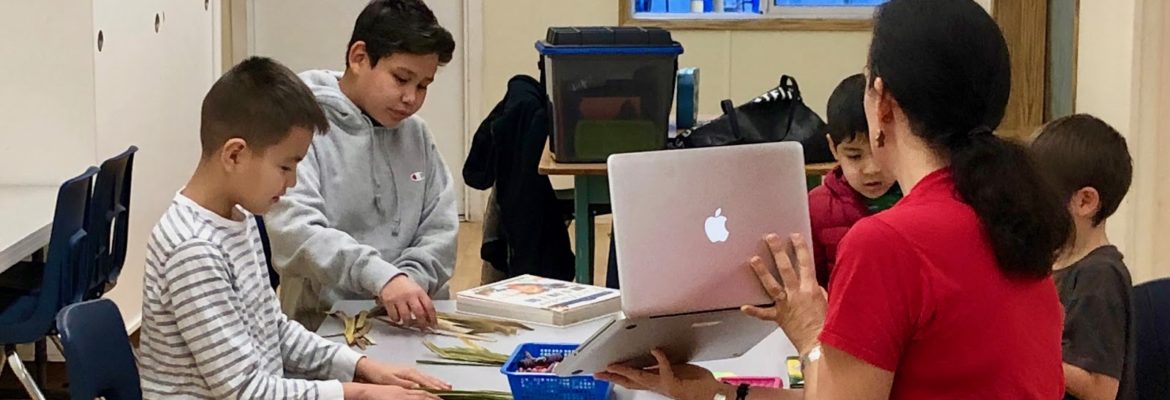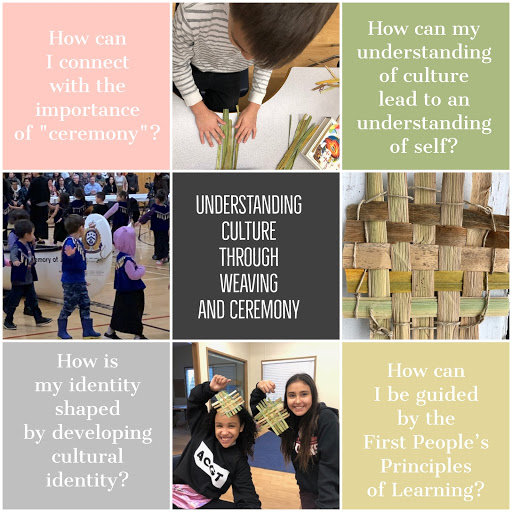MultigradeBuilding a Deeper Understanding of Culture Through Weaving and Ceremony
Core Competency Questions:
- How can I use discussion and active listening to connect with the importance of “ceremony”?
- How can a deeper understanding of cultural contexts lead to a better understanding of self?
- How is my identity shaped by developing a strong cultural identity?
The Context:
Guided by the First People’s Principles of Learning, our Indigenous students embarked on a learning journey that centered around the concept of “ceremony.” Through small group discussion, students were guided to reflect on what a ceremony is and what their role in a ceremony might be. Using the traditional practice of weaving, students were able to connect their own experiences of belonging and culture to deepen their understanding of the Putting the Canoe to Sleep Ceremony. As students experienced this ceremony, they were invited to explore their own identity, through the teachings of the elders about the significance of this day. Students and their families participated alongside one another, reinforcing the role different generations play in authentic cultural experience.
Teacher
“Learning to listen with intention, and act with patience, reinforces the oral tradition”
Student Reflections
“I thought it was cool that I had a lot of family there like my little brother and it was fun being the bucket holder”
“I also liked wearing the blanket and the headband.”
“I think it was a great idea that they had so many schools and how Simon Fraser University had so many people learning about that”
“There was new learners and how you would be able to spread the story about how they went to the canoe ceremony and how they were brushing it off and putting it to sleep”
“It was nice to see the little ones there watching”
“It was a nice experience for everybody”
“I’ve never really been to a canoe ceremony but I’ve been to lots of others so now I know that they put it to sleep until next year when they wake it up”
Curricular competencies
- Career Education – Achieving cultural awareness by exploring self identity and honouring Indigenous traditions
- Language Arts – Uses oral language strategies to build understanding
- Language Arts – Accesses information and ideas from a variety of sources and from prior knowledge to build understanding
ADST connections
- Gathering information from community members to understand context
- Skills can be developed through play, as well as learned skills, such as weaving
Key Questions
How can I build understanding of my culture through meaningful experiences?
What role do I have during a ceremony?
How can patience and listening skills contribute to oral tradition?
What I can learn from my elders about my history?

